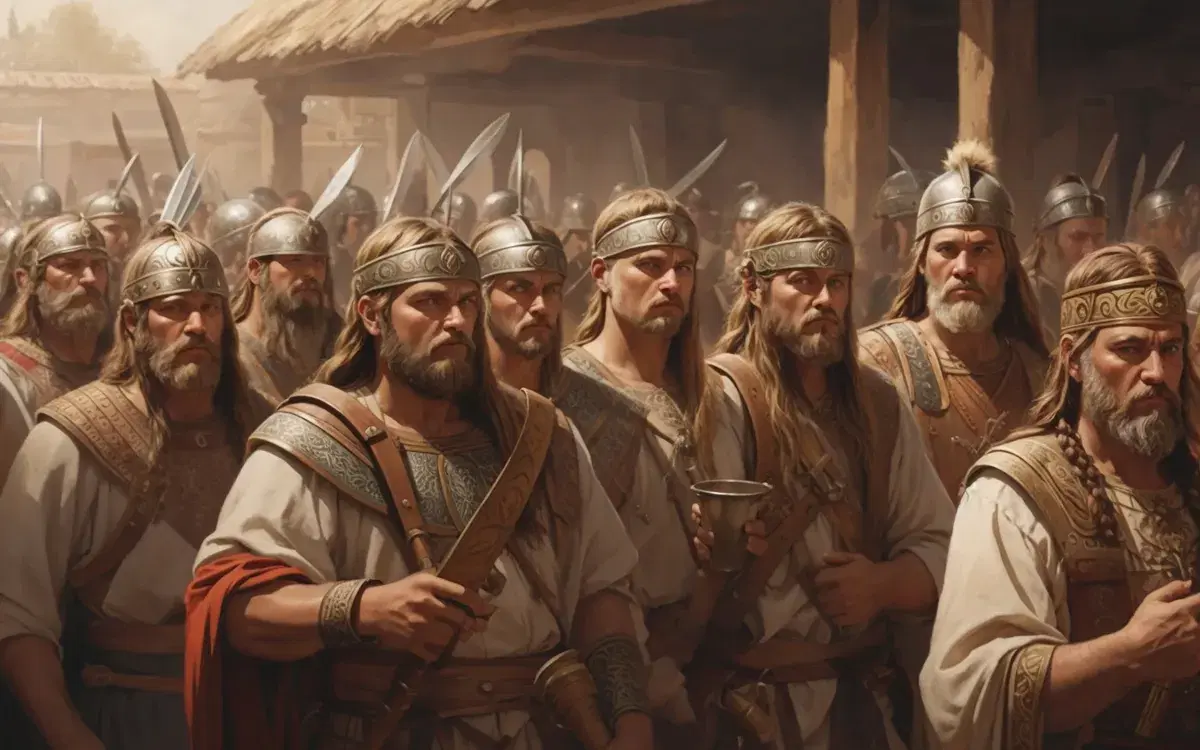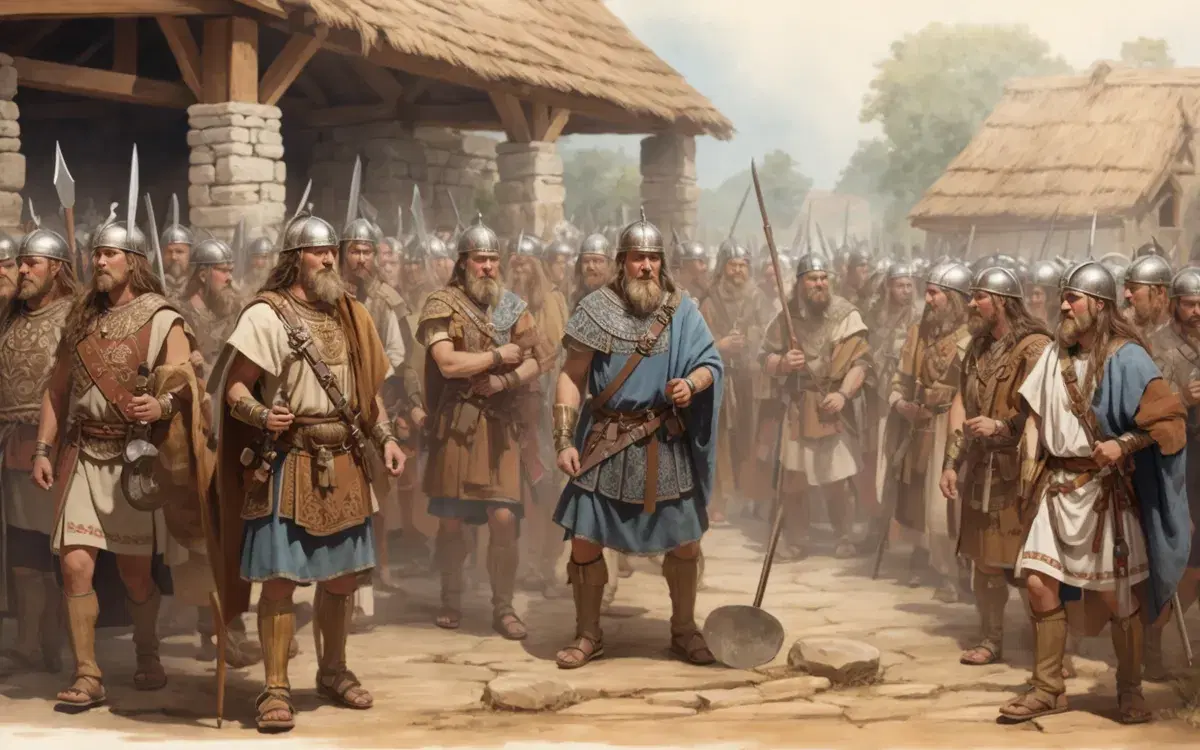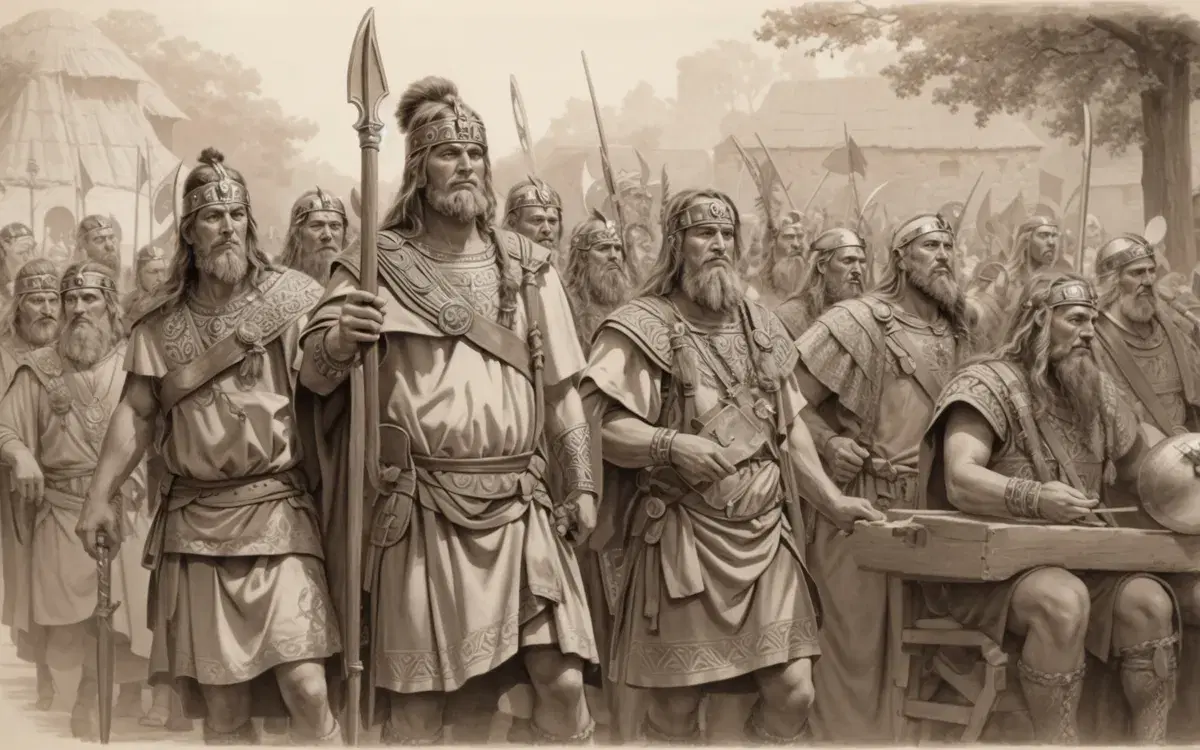Ancient Germanic Tribes: Architects of Modern European Civilization
The history of the ancient Germans tells a story of resilience, cultural adaptation, and lasting influence. These tribes played a crucial role in shaping modern nations such as Germany, England, the Netherlands, and the Scandinavian countries. By exploring their origins, social structures, customs, and encounters with the Roman Empire, we gain insight into their transformation from nomadic warriors to key contributors in European civilization. Their legacy continues to shape modern political systems, cultural traditions, and languages, illustrating their adaptability and long-lasting impact.

Ancient Germanic Tribes
Homeland of the Ancient Germans
The ancient Germans inhabited vast regions stretching from the North Sea and Baltic Sea in the north to the Danube River in the south. Their territory extended west to the Rhine River and east to the Elbe and Oder Rivers. Unlike today’s urbanized Europe, this area was dominated by dense forests and marshes, creating natural barriers and isolating the tribes from Roman cities.
Their villages consisted of simple wooden houses and temporary shelters made from natural materials. These structures reflected their practical approach to survival in challenging environments. The Germans relied on farming, hunting, and livestock for sustenance, maintaining a deep connection to nature. This lifestyle promoted resourcefulness and independence—traits that defined their identity and shaped their cultural evolution.
Society and Daily Life
Germanic society was organized into tribes based on family ties and shared traditions. These tribes valued unity and pride, with economies centered around agriculture, hunting, and herding animals. Women played essential roles, managing households, working in the fields, and caring for livestock. They were highly respected for their strength and wisdom, often inspiring warriors and preserving cultural customs through oral traditions.
Men focused on hunting, farming, and warfare, while artisans, especially blacksmiths, held special status for their ability to create weapons and tools. Blacksmithing was both practical and symbolic, reflecting the tribe’s self-reliance and preparation for battle. Leisure activities, including storytelling and games, were popular during times of peace, fostering social bonds within communities.

Society and Daily Life
Military Strength and Strategies
Warfare was central to Germanic culture, with bravery and honor highly valued. Unlike the disciplined formations of Roman legions, Germanic warriors relied on courage and teamwork. They often attacked in wedge-shaped formations, known as the "boar's head," to break enemy lines. Their weapons, including swords and spears, were prized family heirlooms, symbolizing heritage and bravery.
Retreating in battle was seen as dishonorable, and abandoning a shield brought lifelong shame. Leaders earned respect through acts of courage rather than inheritance, reinforcing values of merit and loyalty. Chiefs led by example, emphasizing teamwork and bravery as cornerstones of their identity.
Encounters with the Roman Empire
The Germans’ interactions with Rome were pivotal to their history. The Romans often viewed them as uncivilized, but the Germans admired aspects of Roman culture. Despite lacking advanced technology, Germanic tribes scored notable victories, such as the ambush of Roman forces led by General Varus in the Teutoburg Forest. This defeat dealt a severe blow to Roman influence and demonstrated Germanic strength.
Although the Romans fortified their borders to limit Germanic expansion, their prolonged contact led to cultural exchanges. These interactions influenced later European developments and set the stage for the Roman Empire’s eventual decline and the rise of medieval kingdoms rooted in Germanic traditions.

Germanic tribes interactions with Rome
Governance and Legal Traditions
Germanic governance balanced tribal democracy with leadership hierarchies. Some tribes had kings, while others chose leaders through assemblies called "folk meetings." Even monarchs ruled with the consent of their people and could be replaced if they failed in their duties. Decisions about war, alliances, and disputes were made collectively, promoting fairness and accountability.
These assemblies also functioned as courts, where disputes were resolved through negotiations and compensation rather than harsh punishments. This focus on fairness and reconciliation helped maintain stability and prevent long-term conflicts, reflecting the Germans’ practical approach to governance.
Religion and Mythology
The ancient Germans practiced polytheism, worshiping gods whose names survive in modern weekdays. Tius (Tuesday), Woden (Wednesday), and Thor (Thursday) were central figures, symbolizing war, wisdom, and strength. These deities represented natural forces and human traits, forming the foundation of Germanic spirituality.
In addition to gods, the Germans believed in spirits inhabiting forests, rivers, and the earth. Folklore about dwarfs and gnomes guarding treasures blended mythology with cultural identity. Rituals and sacrifices sought divine protection and blessings for harvests and battles. Many of these beliefs persisted after Christianity spread, influencing European folklore and festivals.
Lasting Influence of the Ancient Germans
The contributions of the ancient Germans to governance, warfare, and culture continue to shape modern Europe. Their emphasis on independence, courage, and adaptability laid the groundwork for political systems and cultural traditions. From their origins in remote forests to their roles in medieval history, they left a profound legacy.
Their traditions of participatory governance, military organization, and mythology remain relevant today. The story of the ancient Germans highlights the resilience and creativity of people who adapted to challenges and preserved their identity. Their influence endures, reminding us of the lasting power of culture and innovation.





